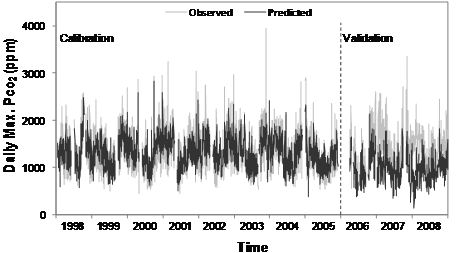Towards managing the carbon dioxide partial pressure in caves with both anthropogenic and non anthropogenic sources
University of Waikato 1, Tourism Holdings Ltd 2 and University of Waikato 3
Abstract
Based on historic data operators of the three Waitomo tourist caves (Glowworm, Ruakuri and Aranui) have been required to maintain the partial pressure of carbon dioxide in the cave atmospheres to less than 2400 ppm(v). Ten minute monitoring since 1998 has shown most exceedances of this limit has come from visitor respiration and exceedances have mostly been avoided in recent years by careful management of visitor numbers and passive ventilation. However one or two exceedances have occurred each year when no visitors were present. Non anthropogenic sources of high carbon dioxide partial pressures were observed in glowworm cave following periods of intense rainfall with exhalation from both stream and drip waters. A linear regression model involving the previous day mean PCO2 tourist numbers, temperature gradients, rainfall and Waitomo Stream discharge successfully predicted the daily maximum PCO2 for Glowworm Cave.

Relationship between predicted and observed daily maximum Pco2 levels in the Glowworm Cave for the calibration period 1998 – 2005 (R2 = 0.56; Nash-Sutcliffe = 0.56) and the validation period 2006 – 2008.
Ruakuri Cave showed a different problem with a side passage (Drum Passage), into which a newly constructed entrance was placed, regularly displaying continuously rising P CO2 when outside temperatures exceeded cave temperatures throughout the diurnal cycle. A natural source of undersaturated infiltration waters containing at least 6000 ppm(v) appears to be active. Management of this can be achieved increasing ventilation.